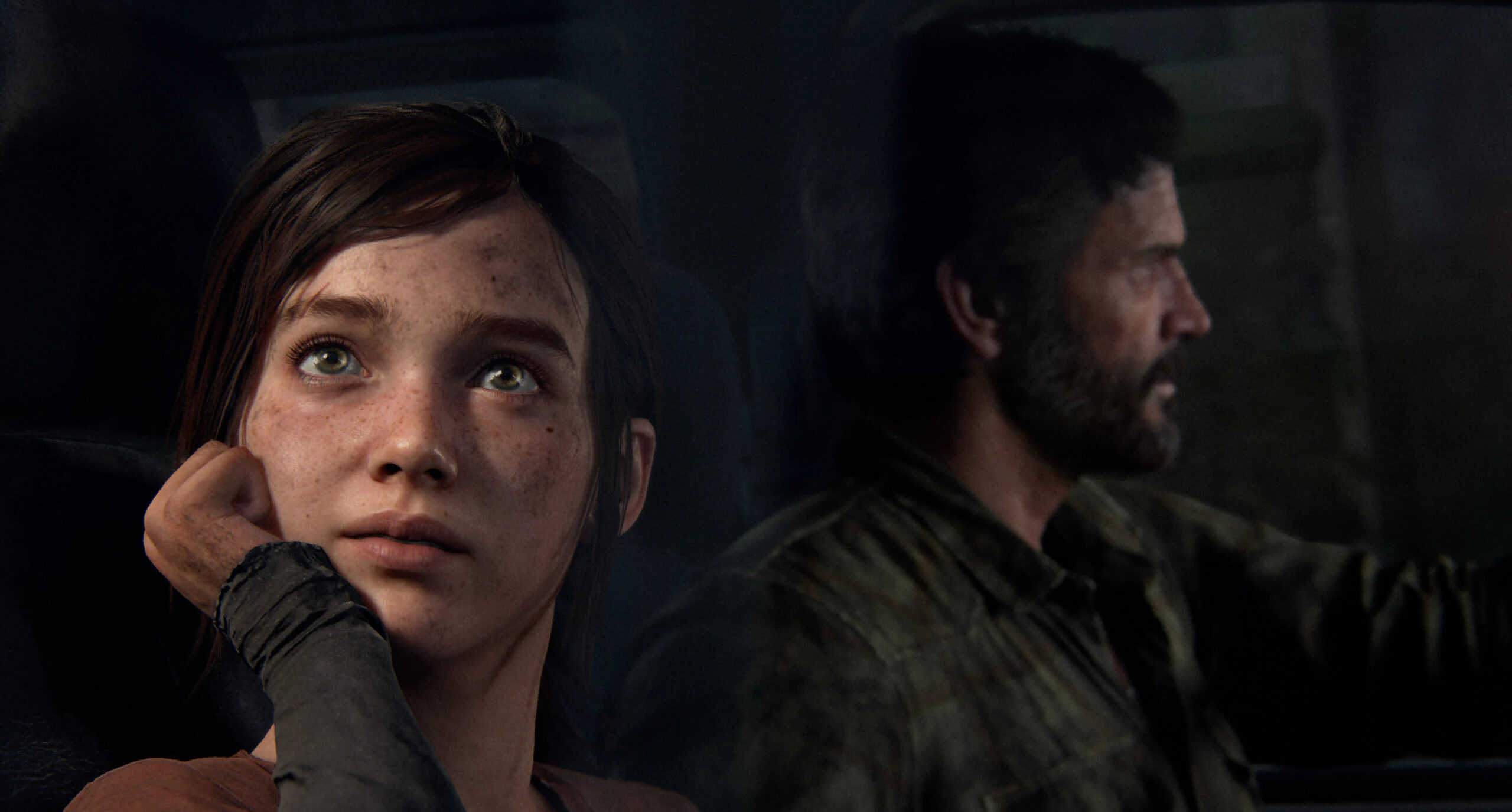The endings to players’ favorite games have been of special significance since long before the medium began emulating the cinematic greats. Starting on the NES and early home computers, video games would begin to place just as much of an emphasis on their story and characters as their gameplay, and making it to the end of a challenging title usually held some reward for players in the form of a compelling ending or secret Easter Egg. Metroid‘s reveal that Samus was female, Bill and Lance’s triumphant escape in Contra, watching Dracula’s castle crumble in Castlevania; the 8-bit classics have some of the most memorable and iconic ending scenes in all of gaming, but the best video game endings showcase just how comparable video game stories are now to the best fiction in print or on film.
Thanks to their interactive nature, video games can tell stories that are at once similar to some of our favorite films and yet entirely unlike anything ever captured on celluloid. The characters that serve as the extension of the player become our digital avatars, and as technology continues to advance, these characters become more and more realistic and lifelike. And, after spending dozens (or even hundreds) of hours in control of these characters, it’s understandable for the ending to a game to be emotionally affecting. The games on this list do a great job of getting the player invested in their story and characters, enticing them to keep playing using engaging gameplay and then delivering a satisfying conclusion that sticks with them long after the credits roll.
Spoilers ahead for each of the games on this list!
20. Shadow of the Colossus
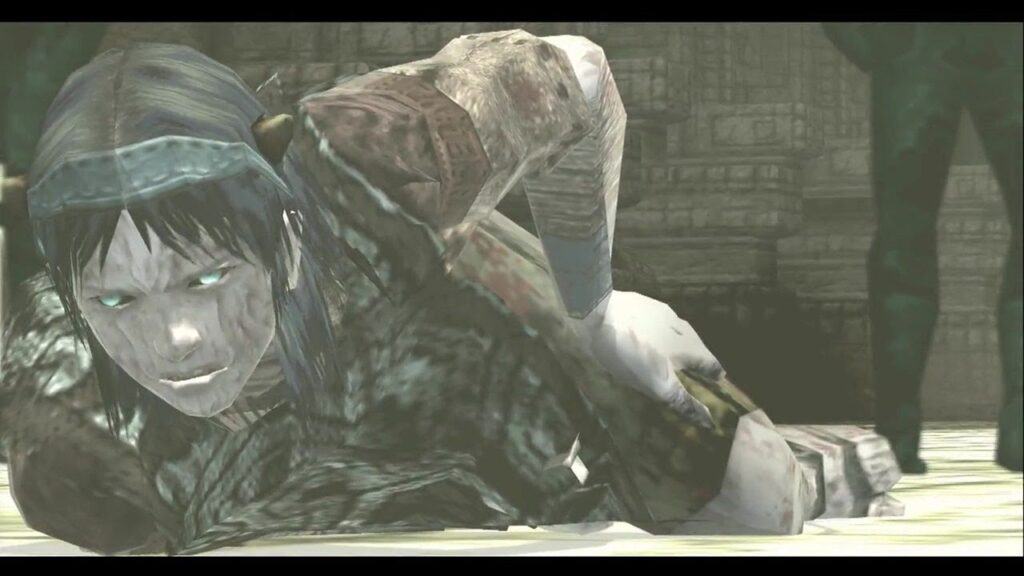
Even though Shadow of the Colossus features very little dialogue and uses environmental storytelling to convey most of its major plot points and development, the game has an incredibly powerful and poignant ending. Wander enters the Forbidden Lands with Mono with hopes of resurrecting her, seeking out the power to bring the dead back to life held by the mysterious Dormin. To achieve this, Wander and his horse Agro must traverse the Forbidden Lands and slay the 16 Colossi that reside there. Unknown to Wander, however, is that the spirit of Dormin is contained with the 16 Colossi and that they serve as a protective force preventing the evil sorcerer’s resurrection.
Wander’s mistaken belief that killing the Colossi will save Mono is the game’s great tragedy, as every time the player encounters one it becomes obvious that they are neutral creatures and that the player is an interloping aggressor. The game ends with Wander’s transformation into a demonic being, his possession by Dormin, and Mono’s awakening, communicating a bittersweet conclusion to the adventure. The young maiden Mono comes back to life but at the cost of the life of Wander. Shadow of the Colossus takes the player on an incredible journey only for its ending to reveal that they’ve been acting as the game’s antagonist the entire time.
19. Final Fantasy XVI
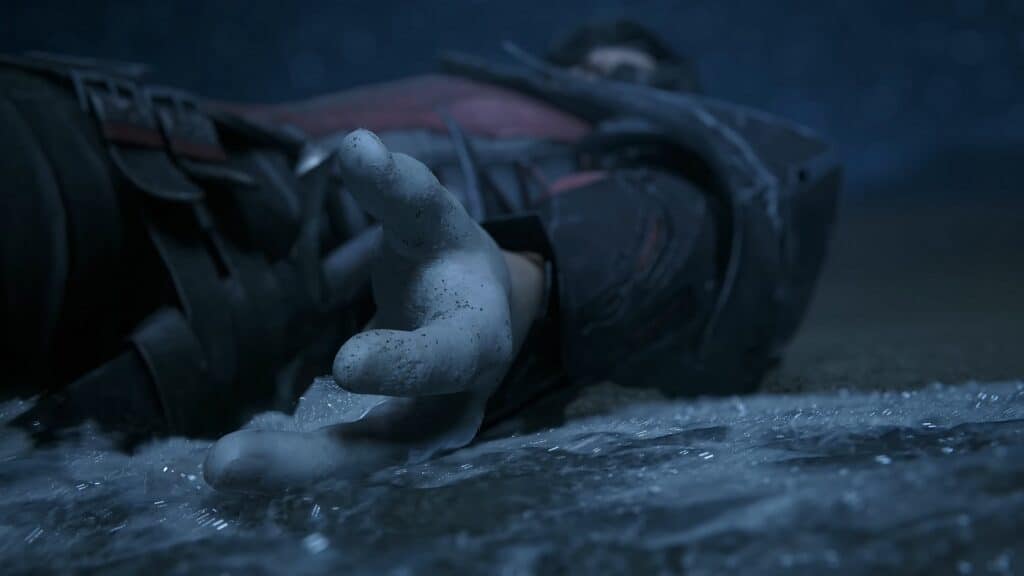
The Final Fantasy series has always been synonymous with some of the all-time highs of video game storytelling, but the latest mainline entry features what could arguably be considered the greatest narrative in the franchise. At the center of this adventure are the two brothers, Clive and Joshua Rosfield, whose place as the Dominants of two Eikons and heirs to the Kingdom of Rosaria places them in the crosshairs of the world’s most nefarious forces. Once it is revealed that the godlike Ultima is pulling the strings of the game’s human antagonists from behind the scenes, Final Fantasy XVI sees the Rosfield brothers triumphantly reunite in one of the game’s most emotionally affecting and cathartic moments.
That alliance carries the player to the game’s thrilling conclusion, in which Clive and Joshua infiltrate Ultima’s flying fortress knowing it may be a one-way trip. Clive is ultimately successful in defeating Ultima, but only after witnessing the true death of his younger brother. After obtaining all of Ultima’s power, Clive makes a selfless sacrifice and eliminates himself and every trace of magic in the world to revive Joshua and bring peace to the planet. It’s a bittersweet ending and one whose impact is hammered home even more in a post-credits scene where we see that Joshua has written a book chronicling their adventures and Clive’s sacrifice. The title? Final Fantasy.
18. BioShock: Infinite
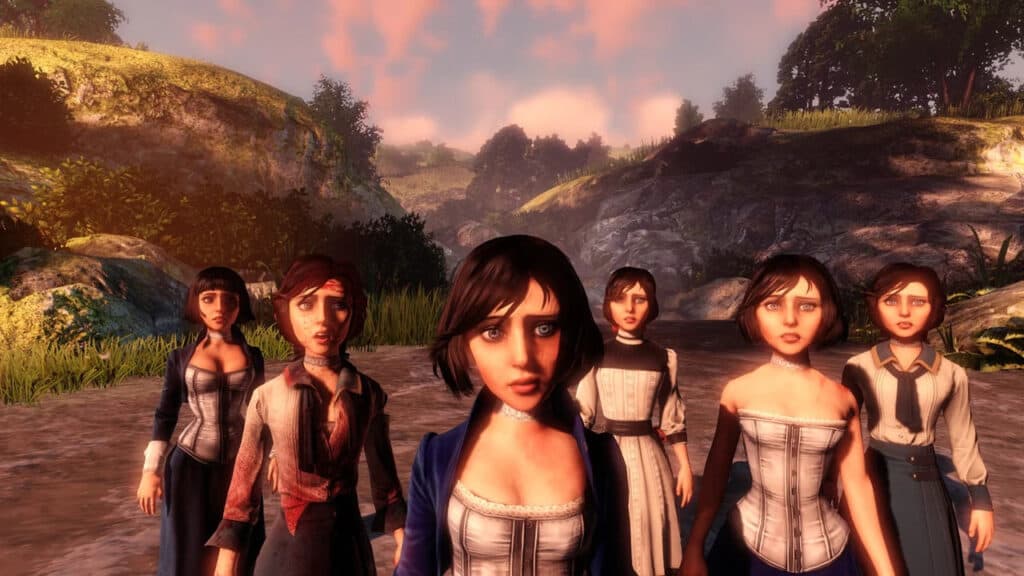
The first BioShock kicks off one of the more thought-provoking first-person shooter franchises, but it’s the series’ most recent game that takes the cake for having one of the best endings in all of video games. In BioShock: Infinite, players assume the role of private investigator Booker DeWitt. DeWitt accepts a job to head to the airborne city of Columbia (an aerial analogue for the first game’s underwater city of Rapture) to rescue a girl, paying off a large debt that he owes in the process. However, upon arriving at Columbia, Booker (and, by extension, the player) begins to notice that things are not quite what they seem. When the girl, Elizabeth, utilizes the help of the terrifying Songbird to destroy the Siphon and gain full use of her ability, the truth reveals itself.
The debt that Booker is trying to pay off is one resulting from the loss of his daughter, Anna, and Anna and Elizabeth are one and the same. Additionally, Columbia’s enigmatic ruler Comstock is an alternate-universe version of Booker, which Elizabeth reveals after gaining omnipotence as a result of her powers reaching their peak. The player gets to witness as Elizabeth guides Booker through a series of infinite parallel universes in which the same conclusion arises — Booker will always become Comstock, and Elizabeth has to ensure that never happens. BioShock: Infinite then concludes with Booker accepting his fate, allowing his daughter to drown him to prevent a future where Columbia becomes reality.
17. Halo Reach
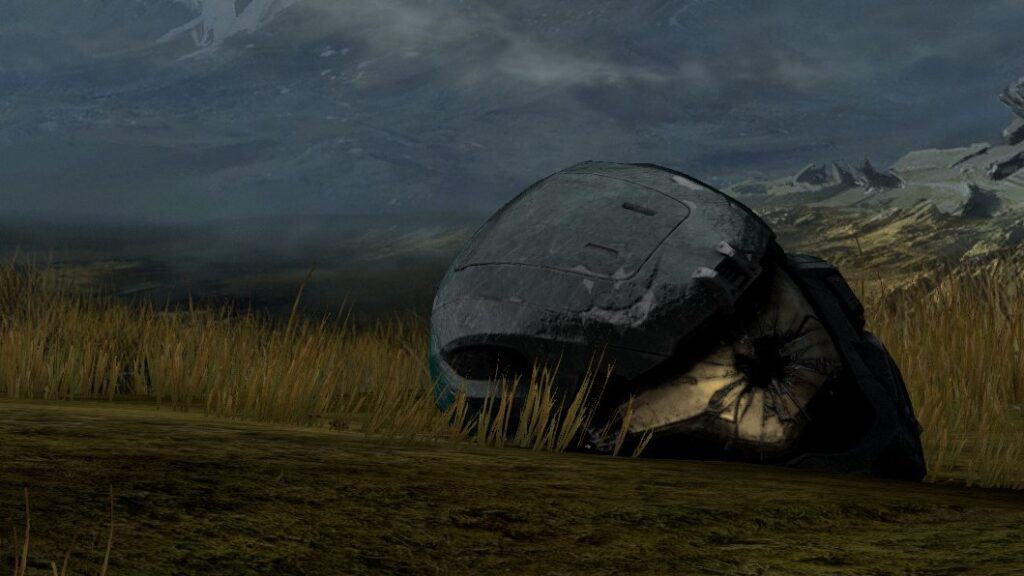
Halo Reach would end up being Bungie’s last dance with the blockbuster franchise it created, and in many ways, it stands as the best game in the series. A large part of Reach‘s impact comes from its incredible story and poetic ending, which an astute player of the franchise will know ahead of time all too well. Like Rogue One to Star Wars, the lore of the mainline Halo games features many references to the sacrifice and heroism of Noble Six, whose defense of the human planet Reach from Covenant forces would inadvertently allow USNC scientist Catherine Halsey and the Cortana AI to escape and make it to the Pillar of Autumn. Halo Reach acts as the prequel to the original Halo in the same way that Rogue One serves as the lead-in to the original Star Wars.
Knowing the fate of Noble Six ahead of time does little to diminish the impact of Halo Reach‘s climactic ending, with the final mission being an incredibly satisfying experience that is also somehow emotionally draining. As the player fights to fend off the Covenant in a battle they have no hope of winning, the heads-up display of Spartan-B312 begins to crack and distort. The game’s ending shot of the lone helmet sitting on the wasteland of Reach, with Halsey’s voiceover narrating in the background, reminds players of the sacrifice of Noble Six and serves as a fitting farewell to Bungie’s stewardship of the Halo franchise.
16. NieR: Automata
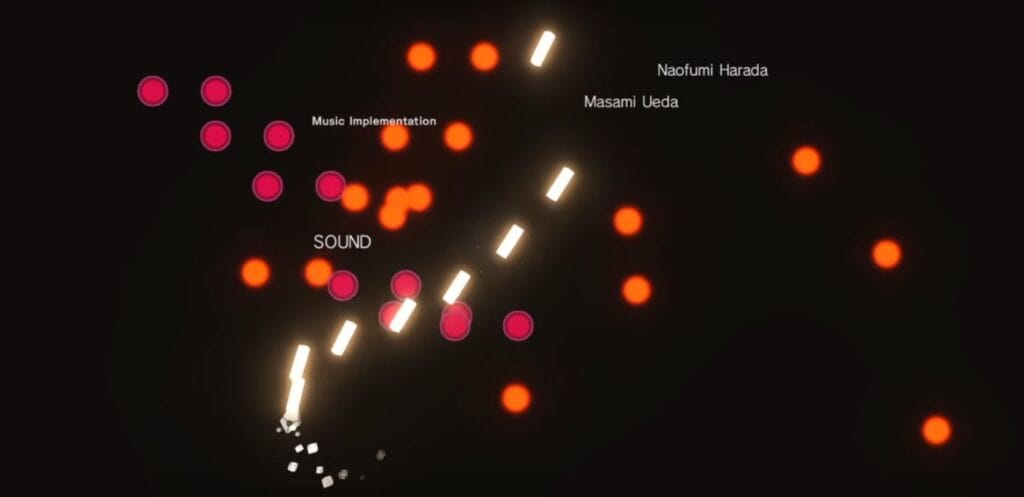
Like director Yoko Taro’s other games, NieR: Automata touches on a lot of philosophical and esoteric concepts. Much more than a simple hack n’ slash action RPG, NieR deals with some very elevated themes and concepts and isn’t afraid to ask the player some challenging questions pertaining to them. The way that NieR: Automata reveals some of its deeper messaging is actually quite ingenious, with the player encouraged to keep playing through the title multiple times in order to see how both the gameplay and the game’s endings change after each run. The title has an ending for every letter of the alphabet, but it’s the canonical Ending-E that truly takes the cake as a profound experience.
After completing Ending-C and Ending-D in which characters 9S and 2B sacrifice themselves for the other, Ending-E sees the Pod rebuild the bodies of 9S and 2B and restore their memories from backup data. The Pod asks the player if they wish to survive, and confirming that they do will immediately place the player into a challenging Shmup level. The player might fail time and again, but each failure brings with it an encouraging message of support from others who have beaten the mini-game. Eventually, the player will complete the Shmup level and find themselves presented with an option to sacrifice their save file to help others in the way that they received help. The war between machines and androids is over, and the player learns something about the value of cooperation and connection with others.
15. Stray

Stray would end up being a surprise in the 2022 release calendar, proving to be a thought-provoking and emotional journey that is much more than just “the game where you play as a cat.” Yes, players do get to control the feline protagonist at the center of Stray and use their natural grace and agility to navigate a dystopian future city, but it’s the smaller, more human moments of the game that end up leaving the greatest impact on the player. Perhaps the primary moment where this is felt is in the game’s ending, where the player is successful but at a surprisingly bittersweet cost.
The world of Stray is our Earth in a distant future. Global warming and pollution end up pushing humanity into vast walled cities, and the player’s main quest in Stray is to escape this manmade prison and rejoin their feline family. Along for the ride is the friendly and helpful robot B-12, whose consciousness belongs to a long-dead human scientist. The duo is successful, opening the dome and letting daylight pour into the city for the first time in centuries, but at the cost of B-12’s function. To see the player’s goal realized, B-12 uses the last of his power to successfully open the dome, sacrificing himself so that his feline friend might reunite with their family. But though B-12 is gone, the player is left with the impression that opening the dome provides the planet with some of the first hope it’s experienced in generations.
14. Ghost of Tsushima
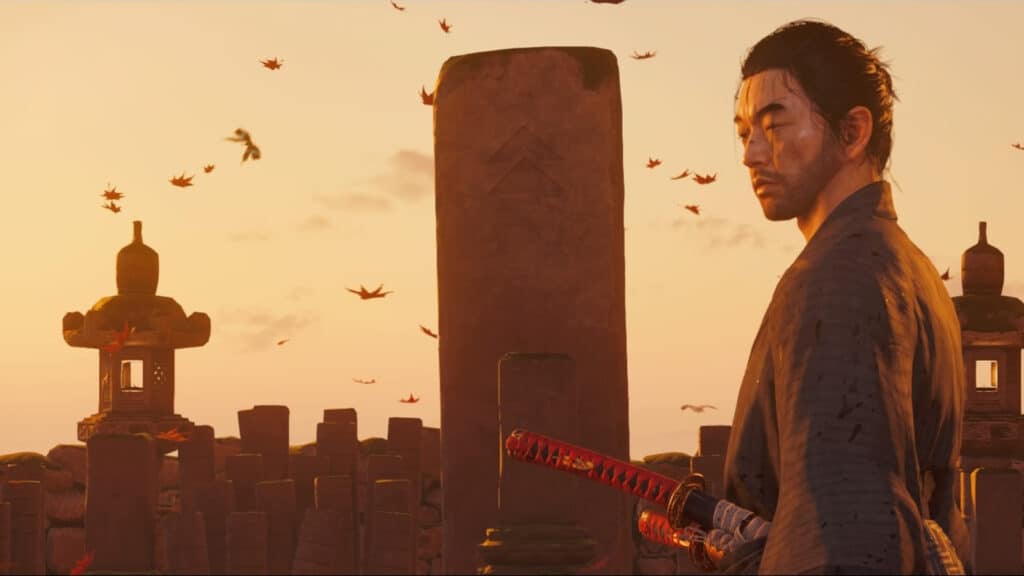
In Ghost of Tsushima, players take on the role of the honor-bound samurai Jin Sakai as he works to repel the Mongol invasion of Japan. As part of this one-man mission, Jin begins to abandon the code of the samurai in favor of working in the shadows as a Ghost. Though Jin is ultimately successful in ridding Japan of Mongol influence and restoring order and his uncle’s rule, his uncle declares that he must atone for his dishonorable actions. This is where Ghost of Tsushima‘s ending takes place, requiring the player to make a difficult choice that has significant story implications depending on which option they choose. Jin’s Uncle, Lord Shimura, suggests that Jin can either restore his honor or walk away from the life of the samurai forever to live as a Ghost, but the mechanics of that choice are where the conflict lies.
To restore his honor as a samurai, Jin must defeat and kill his uncle in a duel. However, Jin can choose to balk at the rigid code of honor of the samurai, remarking that he doesn’t care about concepts such as “honor” if they call on him to kill a beloved family member. Depending on which choice the player selects, the ending of the game changes, and players can continue roaming Ghost of Tsushima‘s open world with a different set of rewards based on that choice. Ultimately, most fans consider the canonical ending of the game to be that of Jin restoring his honor by killing Lord Shimura, as Jin spends the entire game trying to prove to himself and his uncle that he is the honorable man his father would have wanted him to be.
13. Journey

To say that Journey is a game like no other is a bit of a misnomer now, but at the time of its release, it was a sentiment that rang true. The experience of playing Journey is almost transcendental, taking the player through a series of very distinct and palpable emotions before ultimately trying to communicate something poignant about companionship, death, and the meaning of life itself. At its core, Journey presents a fairly simple gameplay loop. Either alone or with a partner, the player must make their way to a mountain that lingers off in the distance. The game does a great job of communicating the significance of this mountain to the player without ever using any dialogue to do so, and making your way there leads to one of gaming’s most poignant endings.
Taking the player character to the mountain sees them fall and die of exhaustion before actually making their way up to its summit. The player then suddenly revives and begins ascending to the mountain’s peak before eventually being reborn and beginning anew at the outset of a new adventure. The entire ending sequence is a subtle metaphor for life itself, seeing the player go through a series of emotions before things just…end. And the significance of that ending is entirely up to the interpretation of the player. Rather than attach any one ideology or belief to the significance of Journey‘s ending, it is instead poetically ambiguous. Everyone lives and dies, but it’s the journey between those two events that matters.
12. Mass Effect 2
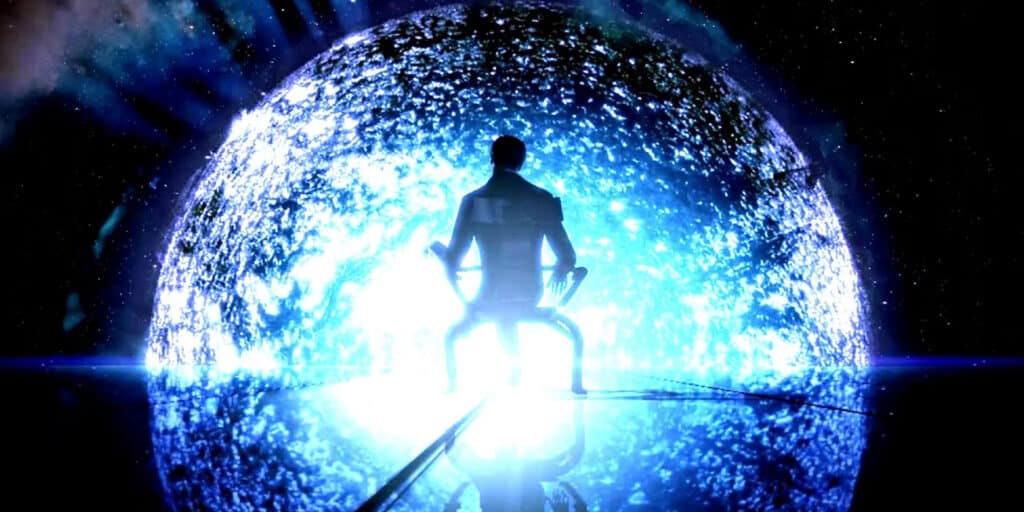
It might be surprising to see Mass Effect 2 on this list instead of Mass Effect 3, but the fact is that Mass Effect 3 somewhat fails to stick the landing in the same way that its predecessor does. Mass Effect 2 is the Empire Strikes Back of Bioware’s sci-fi RPG saga, significantly upping the stakes for Shepard and their crew and ending things on an incredibly bleak note. By the time credits roll on Mass Effect 2, things are more precarious than ever and the Reapers are gearing up for their forced extinction of all organic life in the galaxy. However, the one glimmer of hope that remains is Shepard, whose survival of the game’s climactic suicide mission (along with the rest of his crew if players prepare accordingly) shows that they just might have what it takes to be the hero we’ve always envisioned them as.
What makes Mass Effect 2‘s ending the best in the trilogy is that, unlike the first Mass Effect and Mass Effect 3, there are no easy answers that it offers up about the fate of the galaxy. Shepard dies within the first minutes of Mass Effect 2 only to be painstakingly reconstructed thanks to the pursestrings of the Illusive Man, and he gradually realizes that his mysterious benefactor is just as much of a threat to peace in the galaxy as the impending Reaper invasion. Even though Shepard and their crew are successful at the game’s conclusion, there’s an overwhelming sense that their work is just beginning, and it’s that sense of adventures yet to come that makes Mass Effect 2‘s ending so important in the trilogy.
11. Uncharted 4
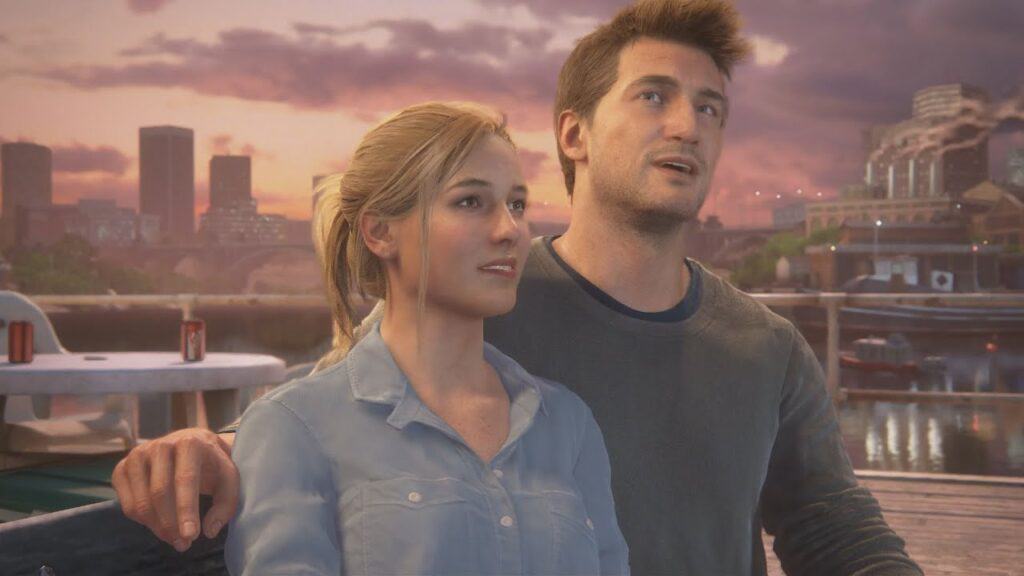
One of the biggest challenges that long-running game series face is needing to find a suitable ending point. Not only are sequels to popular games a safe bet for publishers (meaning they’ll try to find any reason to keep a franchise going well past its prime), but coming up with endings that are both meaningful and satisfying can be a difficult task for game series that have decades of stories and a plethora of interesting characters with arcs to resolve. Of course, Naughty Dog isn’t just any studio, and the Uncharted franchise proves that it’s possible to satisfyingly conclude a legacy game series with the excellent Uncharted 4: A Thief’s End.
Ludonarrative dissonance aside, Uncharted 4 reunites Nathan Drake with his long-lost brother, takes his and Elena’s relationship through its paces (challenging the hero to grow in the process), and raises the question of whether players will see the treasure hunter survive his latest adventure. That the game and the Uncharted series end with Nathan Drake successfully escaping and settling down with Elena is a beautifully serene ending to a series about action and swashbuckling adventure, and it’s a fitting fate for the series’ loveable hero and his longtime love interest. Sometimes a happy ending is the best fit!
10. Metroid Dread
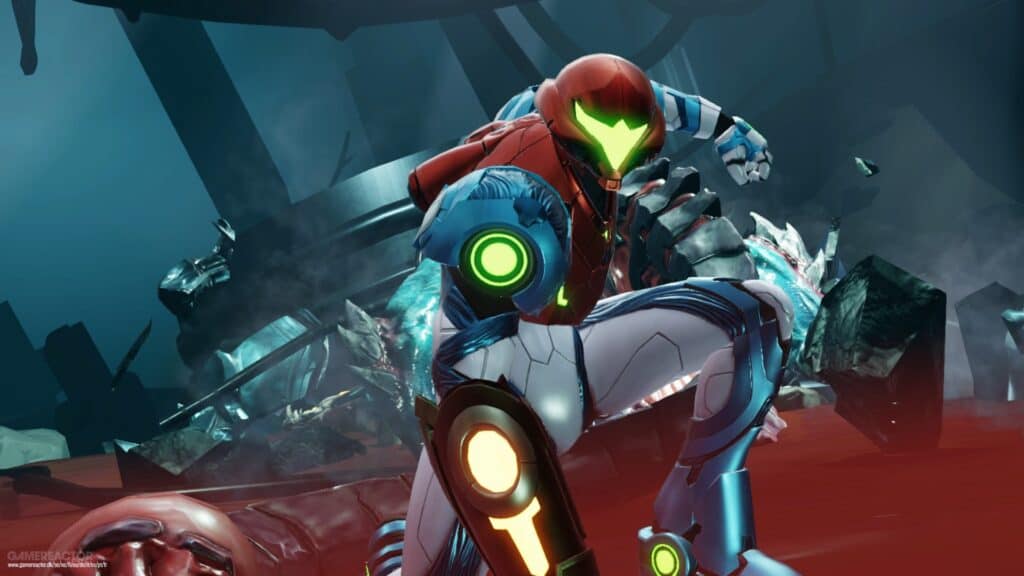
Almost 20 years after the release of the previous mainline game in the Metroid timeline (2002’s Metroid Fusion), Metroid Dread concludes the decades-spanning saga of Samus Aran that began on the NES with the original Metroid. While few of the Metroid games are very direct in the way that they tell their stories, Metroid Dread somewhat bucks this trend to give players some incredible revolutions throughout the course of the game’s ending. Not only do these revelations completely change the context in which the player will see Samus on subsequent playthroughs of other games in the series, but they also create a bold new chapter for the franchise that has the potential to see the series’ protagonist become its villain.
Players spend most of Metroid Dread pursuing the game’s villain, Raven Beak. By the time players finally catch up to Raven Beak, he has killed the only other surviving Chozo on Planet ZDR, Quiet Robe, and stands ready to confront Samus in a final battle. He then reveals that he is actually Samus’ father, having created and raised her as a human-Chozo hybrid to be the galaxy’s strongest warrior. He also wishes to use her unique DNA as a means to clone a Metroid army. Samus stops Raven Beak and escapes Planet ZDR before its destruction, but not before transforming into a full human-Metroid hybrid and re-absorbing the X-Parasite into her body. By the end of Metroid Dread, Samus becomes the very thing she has spent her career trying to hunt down and eradicate.
9. Silent Hill 2
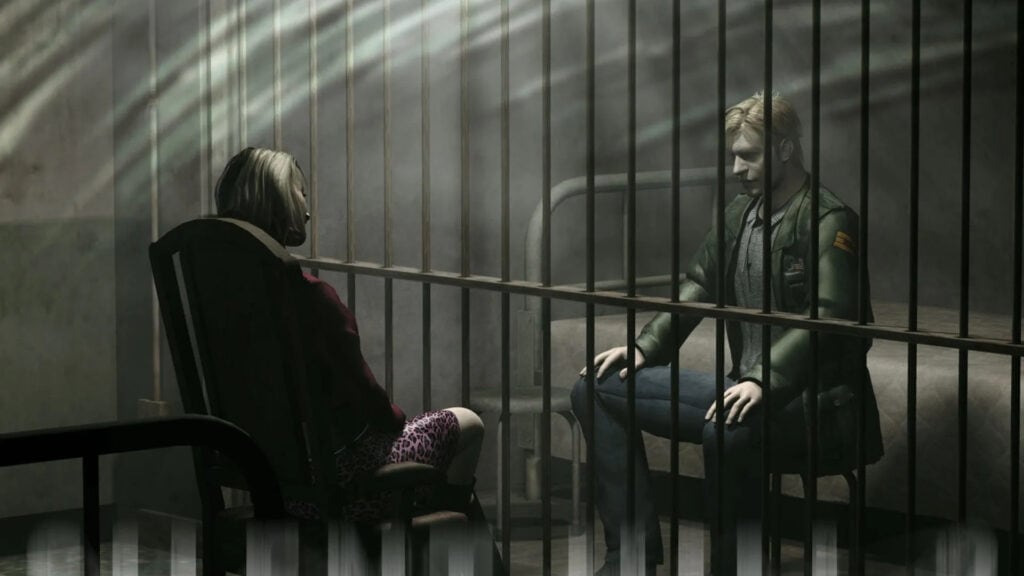
Like its fellow survival-horror pioneer Resident Evil, the Silent Hill games traditionally have multiple different endings that players can unlock depending on their performance. The original Silent Hill has five different endings that players can earn (including its infamous UFO ending), but its sequel ups the ante a bit by including a total of 6 possible endings. Silent Hill 2‘s late-game reveal behind the fate of the protagonist’s wife gives each of the endings some narrative weight, but only one can be considered the true canonical ending of James Sunderland’s story. It’s that ending that helps rank Silent Hill 2 high up on this list.
James heads to the town of Silent Hill after receiving a letter from his deceased wife, hoping that he can clear up the mystery surrounding her death. After meeting some eccentric characters and enduring some horrific circumstances, James learns the truth — he’s the one responsible for his wife’s death. The town of Silent Hill and the mysterious Pyramid Head are manifestations of James’ grief and guilt, and though the game offers up a “good” ending it will never erase James’ past. The true ending to Silent Hill 2 is one where, after learning the truth behind his wife’s death, the player generally plays poorly, displaying a lack of interest in surviving. Following defeating the final boss, James heads to the lake and drowns himself in the town of Silent Hill, joining the spirit of his late wife in the game’s iconic “In Water” ending.
8. Undertale
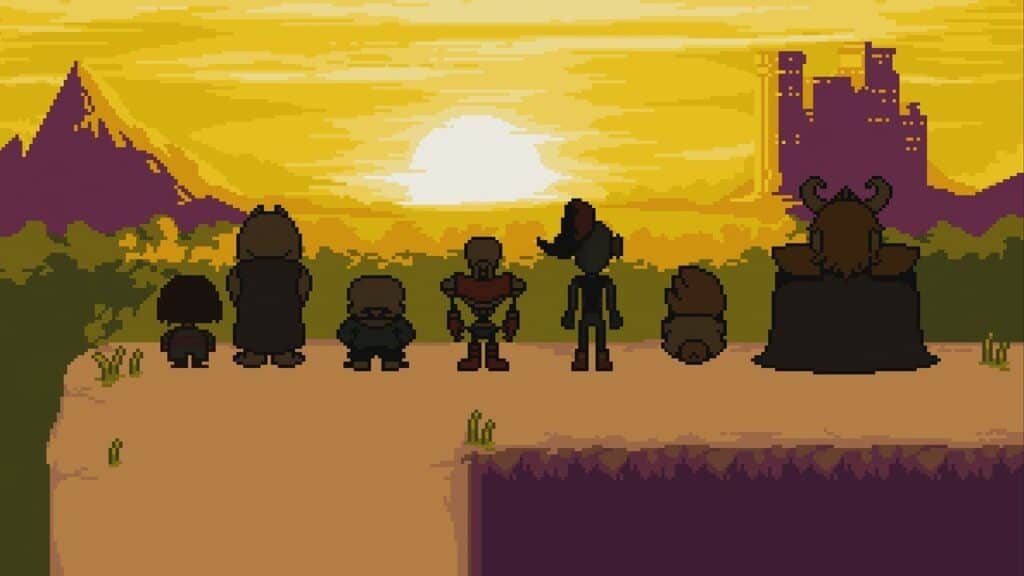
Interestingly, the indie hit Undertale is yet another game where the player’s gameplay style has a heavy emphasis on the ending that they earn. Undertale allows players to choose how they approach each of the game’s RPG-style encounters. Instead of fighting and killing the monsters that the protagonist encounters throughout their adventure, the player can instead choose to hug and befriend them. As a result, Undertale ends up having three different endings based on how the player approaches the game’s encounters. Players can earn either the Pacifist, Neutral, or Genocide endings, with the game’s best ending arguably being the True Pacifist ending.
In order to get this happy ending to Undertale, players must first complete the game and earn a Neutral ending (which requires a mix of attacking and befriending the monsters of the Underworld). After beating the game once with a Neutral ending, it’s possible to start the game over and avoid any violence whatsoever, earning the True Pacifist ending by Undertale‘s conclusion. In this satisfyingly sweet ending, the barrier between the world of humans and the Underworld is broken, and the protagonist returns home with the monster friends that they met along the way. It’s a beautifully subversive twist on the traditional JRPG, which sees the player kill almost endless swarms of monsters before reaching the game’s conclusion.
7. Final Fantasy VII
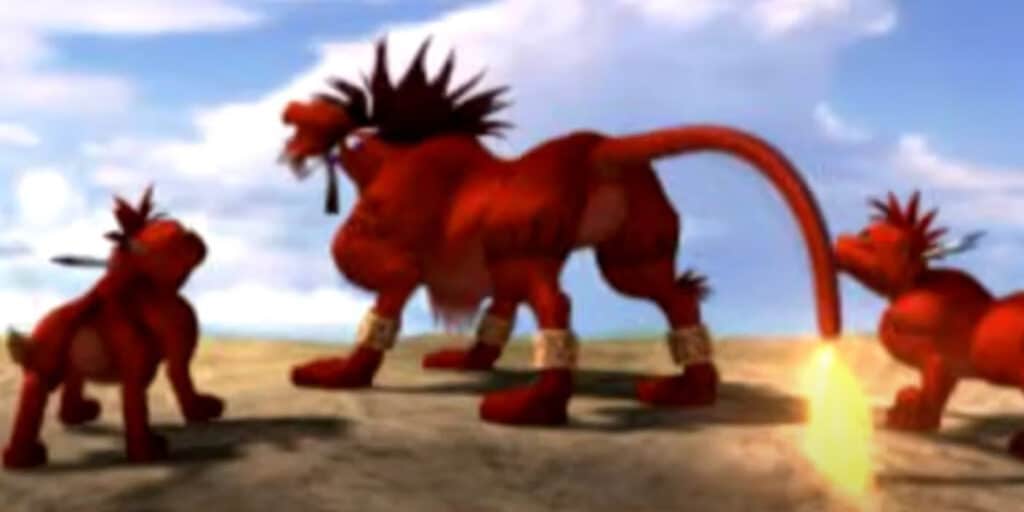
Like most of the mainline games in the Final Fantasy series, Final Fantasy VII has a very clear set of themes and messages that guide its excellent narrative. The story of the Shinra Company and their senseless killing of the planet in search of riches is an allegory for the dangers of unchecked capitalism and environmental pollution, and the game’s ending does an incredible job of concluding that story in a way that makes sense without feeling contrived.
Believing himself to be an Ancient (instead of the genetically engineered offspring of an alien being), Sephiroth uses the Black Materia to call on Meteor and destroy humanity so that he might claim the planet as his own. Cloud and his companions work tirelessly to stop Sephiroth while also preventing Shinra from making things worse, eventually heading to the Northern Crater to confront the physical body of Jenova and the true corporeal form of Sephiroth head-on. Even though the party are successful the Meteor is already on a collision course with the planet, and the game ends with scenes of destruction.
However, the true ending comes when the player is treated to a scene of Midgar, seemingly centuries later, overgrown with vegetation. Red XIII and his children appear, showing that the life of the planet continues to thrive in the wake of Shinra’s unchecked industrialization and the cataclysmic meteor. Given time, the planet has begun to heal itself, proving that Cloud and his companions’ struggle was worth it in the end.
6. Dark Souls III
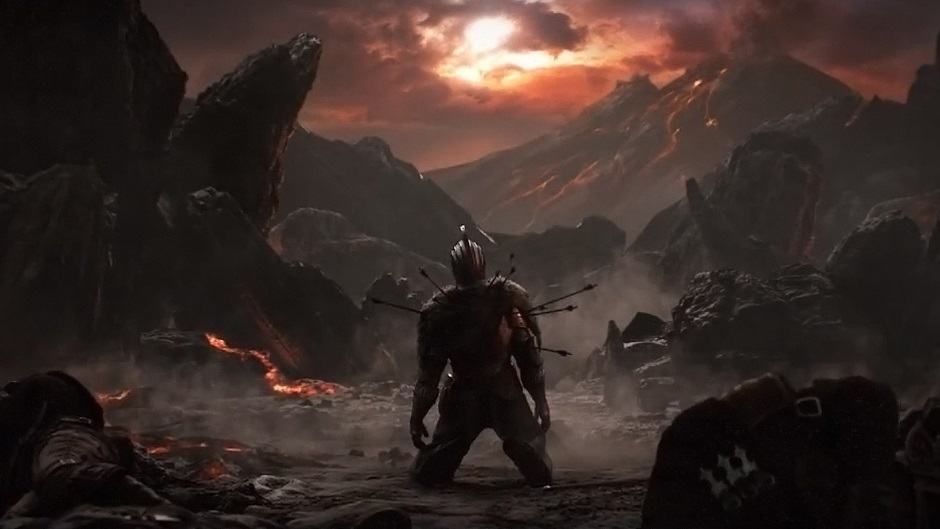
The Dark Souls series is one with some incredibly complex lore, most of which is communicated to the player through item descriptions and environmental storytelling. Still, Dark Souls‘ world is absolutely bursting with a rich history and plenty of important characters, events, and conflicts, all of which come to a head in the trilogy’s incredible conclusion — Dark Souls III. Like most great games, the true weight of Dark Souls III‘s narrative comes from the individual story that the player experiences along the way, but the game does allow players to earn one of four endings, each of which is officially canon according to developer FromSoftware.
In terms of which ending makes the most sense, though, it’s arguably the game’s second potential ending — The End of Fire. In order to end the Age of Fire, players must complete a series of challenging tasks (including defeating one of the game’s most difficult optional bosses, Champion Gundyr) and refuse to link the first flame after killing the Soul of Cinder. Instead, the player will call upon the Fire Keeper, who will in turn extinguish the first flame and envelop the world in darkness. Though this ending appears bleak, it signals a breaking of the neverending cycle of conflict and death in the world of Lordran, allowing life to begin anew.
5. The Legend of Zelda: A Link to the Past
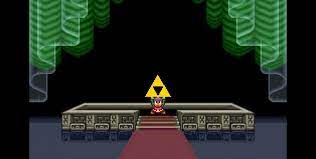
The Zelda games typically feature the same general narrative beats in each of their endings. Link defeats Ganon, saves Princess Zelda, restores the Triforce, and Hyrule lives happily ever after. Where A Link to the Past differs is in the understanding that the game is actually a prequel to the original Legend of Zelda, taking place hundreds of years before the events of the first game in the series and featuring previous incarnations of Link, Zelda, and Ganon. Long before the release of Skyward Sword and the reveal of the official Zelda timeline, A Link to the Past would introduce the connective tissue that binds all games in the Legend of Zelda series together, and the Master Sword is the key.
A Link to the Past‘s iconic ending does all the things that each of the other Zelda games feature in their endings, but its leaves the player on a bittersweet and ambiguous note. After defeating Ganon, recovering the Triforce, and returning the Sacred Realm to its former glory, Link returns to Hyrule and players get to watch a series of vignettes showcasing the return of peace to Hyrule. Then, in a final shot, Link returns to the Sacred Grove within the Lost Woods and places the Master Sword back in its pedestal. Fans might not have known it then, but that blade (and its return to its resting place) is the key to the cycle of rebirth and conflict over the fate of Hyrule.
4. The Last of Us
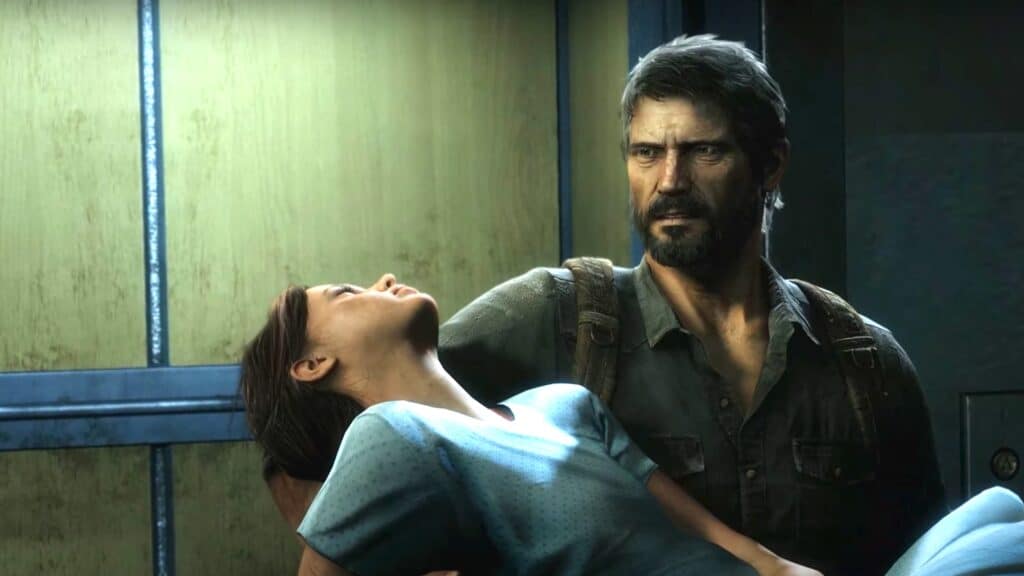
Years before The Last of Us Part II would remove any sense of ambiguity from the ending of the first game in the series, the ending to the first Last of Us would shake a generation of players to their core and leave them pondering its outcome for months or even years afterward. The Last of Us does a great job immediately endearing players to its gruff protagonist Joel, establishing his tragic backstory and potential to become a father figure before Ellie even appears on screen for the first time. The duo’s journey across the post-apocalyptic United States sees Joel begin to view her as more than just a mission, and the two form a bond not unlike one of father and daughter.
So, when faced with the choice to sacrifice a daughter for a second time (something he never had a choice in originally), Joel chooses the selfish option, dooming humanity in the process. Ellie holds the cure for the cordyceps virus, only harvesting that cure means her death. And Joel, refusing to lose a daughter again, does everything in his power to prevent that from happening. The game ends with a quiet reflection on the events that took place in the Firefly hospital, with Joel outright lying to Ellie and the player getting a sense that she knows it. That ending shot of Ellie looking wistfully out the window and murmuring “Okay” is both heart-wrenchingly bleak and perfectly ambiguous, allowing the player to fill in the gaps with their interpretation and imagination.
3. Super Metroid
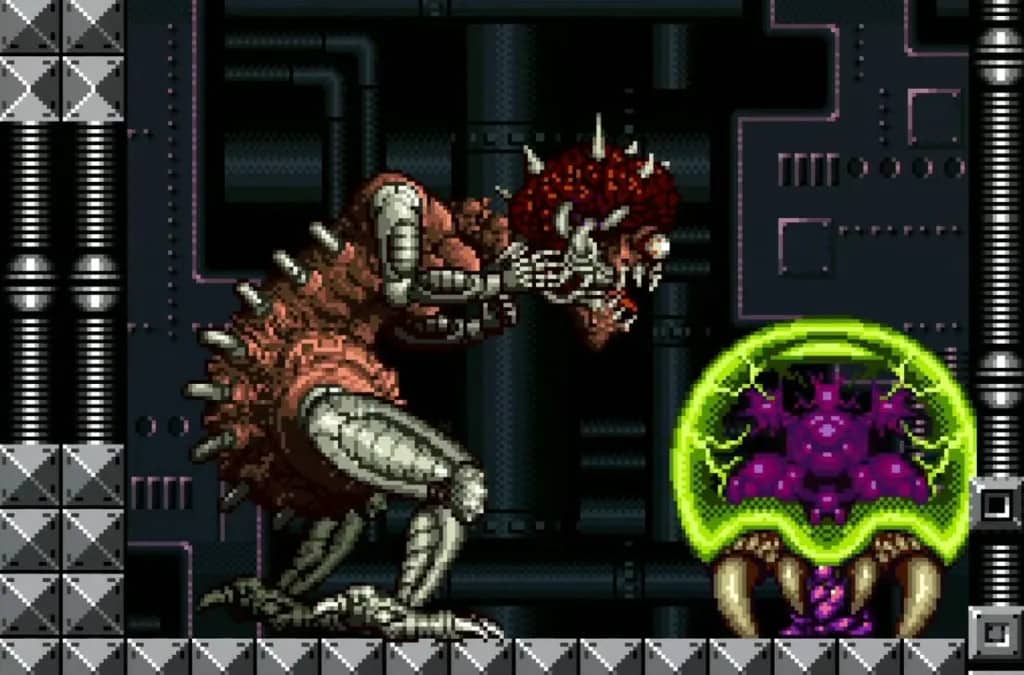
Metroid Dread may feature some of the most direct and intentional storytelling in the series (well, good storytelling anyway. The less said about Metroid: Other M, the better), but Super Metroid‘s ending is one of the best not just in the Metroid series, but on the SNES and in video games as a whole. Having saved the last remaining Metroid at the end of Metroid II: Samus Returns, Super Metroid begins with Samus needing to come to the small creature’s rescue as the Space Pirates attempt to steal the last remaining Metroid for their own nefarious purposes. The player then spends the entirety of Super Metroid tracking down the titular creature, eliminating Mother Brain’s lackeys along the way and braving the treacherous environments of Planet Zebes.
It’s not until Samus is approaching the final confrontation with Mother Brain that she happens upon the baby Metroid, now a full-grown “super” Metroid. After initially attacking Samus, the Metroid recognizes her as its savior and mother figure, fleeing in embarrassment. When Samus is about to die at the hands of Mother Brain in the last boss battle, the baby Metroid shows back up and absorbs all of Mother Brain’s power. After passing along that energy to Samus, the baby Metroid sacrifices itself before Samus destroys Mother Brain and escapes Planet Zebes. The Metroids are now extinct, and the species’ final act ends up being a selfless and heroic sacrifice to save the one person who hunted them across the galaxy.
2. Red Dead Redemption
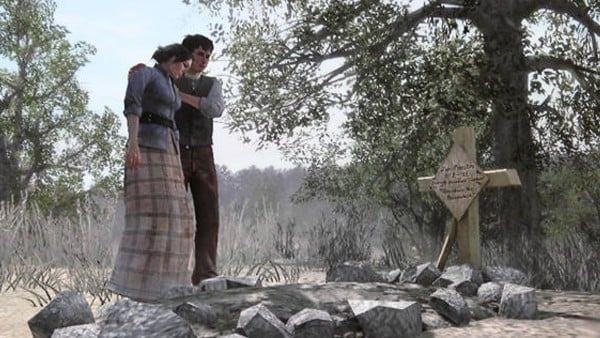
Similar to The Last of Us, Red Dead Redemption‘s sequel would eventually give its predecessor a run for its money in terms of featuring a devastatingly bleak ending, but the surprise epilogue of Red Dead Redemption stands as one of the best surprises of any Rockstar game. After spending the majority of the game playing as John Marston and doing the dirty work of the FBI, the very same people who were supposed to reward the protagonist end up gunning him down in cold blood. Leaving behind a wife and a son, the player is left to watch as the protagonist’s surviving family bury him on their family homestead and rightfully grieve his wrongful death.
However, that’s not where the story ends, as players then get to pick things back up as John’s son Jack and get revenge on Agents Fordham and Ross. As the saying goes, “Revenge is a dish best served cold”, and the revenge that Jack gets to deliver to his father’s killers is a fitting end to these two crooked government agents. What makes Red Dead Redemption‘s ending so great is the way that it quickly pivots from tragedy to triumph in the span of just a few minutes while also showcasing the “kill or be killed” nature of the Wild West.
1. Metal Gear Solid 3: Snake Eater
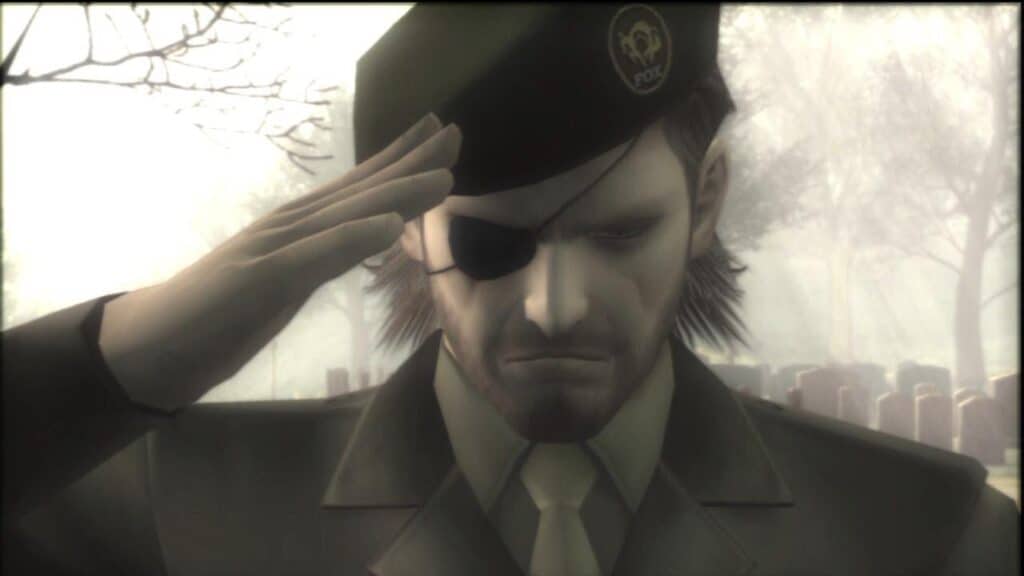
Metal Gear Solid 3: Snake Eater stands as the pinnacle of Hideo Kojima’s Metal Gear saga and one of the greatest games ever made, and its ending plays a large part in the title’s continued significance and appreciation. Rather than control Solid Snake, Metal Gear Solid 3 takes players back to 1964 amid the Cold War and puts them in control of Naked Snake — the man who would eventually become Big Boss. After his mentor seemingly betrays her country and defects to the USSR, Naked Snake must infiltrate the jungles of the Soviet Union and retrieve state secrets while preventing the launch of a new Russian nuclear super weapon.
Snake’s mission is ultimately a failure, and to make up for that failure he must return to the USSR and eliminate his mentor — The Boss. The climactic showdown between Naked Snake and The Boss is a brilliantly poignant moment from both a narrative and gameplay perspective, forcing the player to utilize hand-to-hand combat in a true test of will and strength against their character’s mentor and mother figure. Snake defeats The Boss, killing her with her own weapon in a serene field of white flowers that gradually turn to red following her death. Ultimately, Snake learns of the treachery at play in the hands of his own country, prompting him to realize why his mentor deflected in the first place and salute her grave in a somber display of emotion for the man that becomes the series’ most notorious villain.
The image featured at the top of this post is ©Gameplay screenshot.
